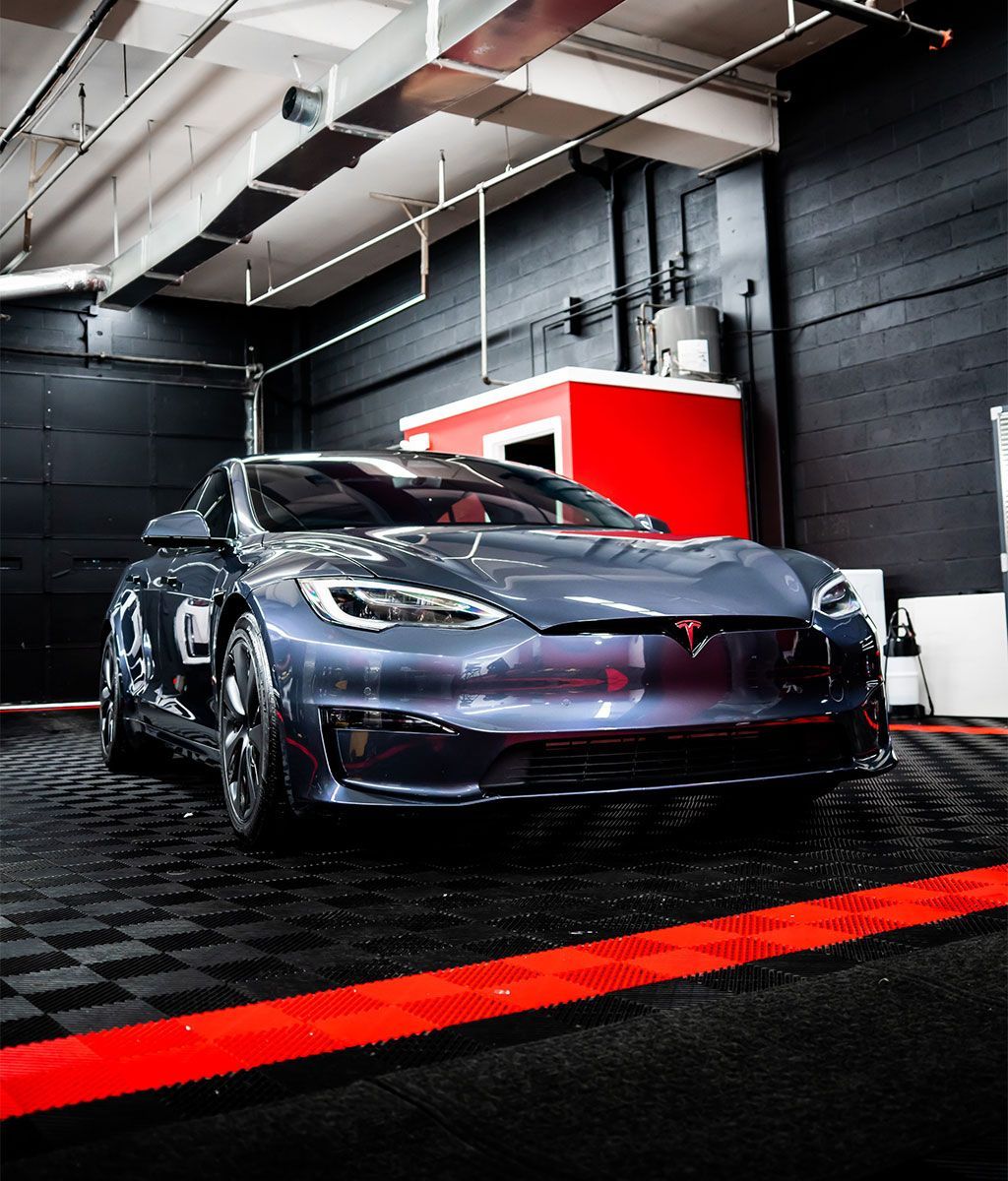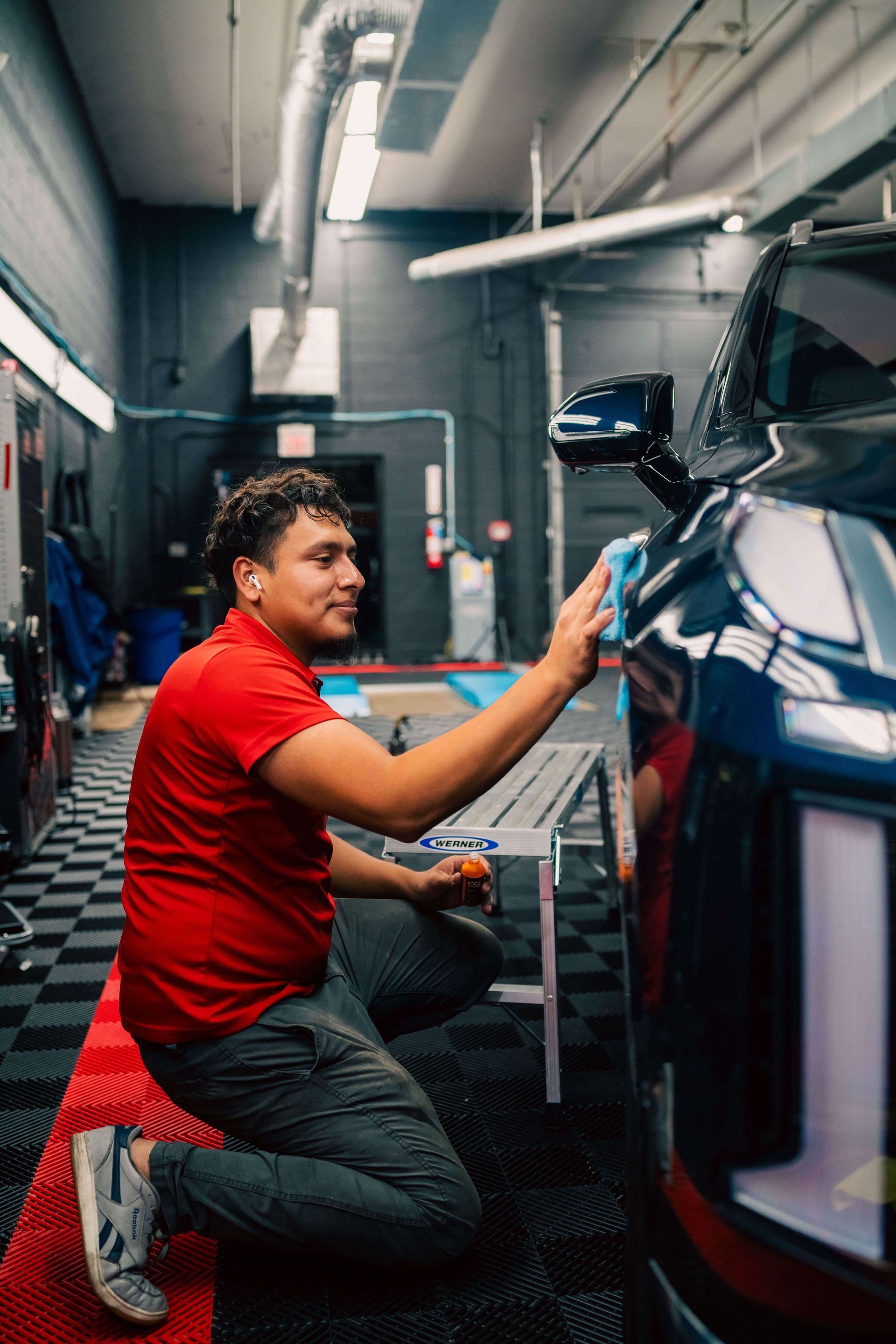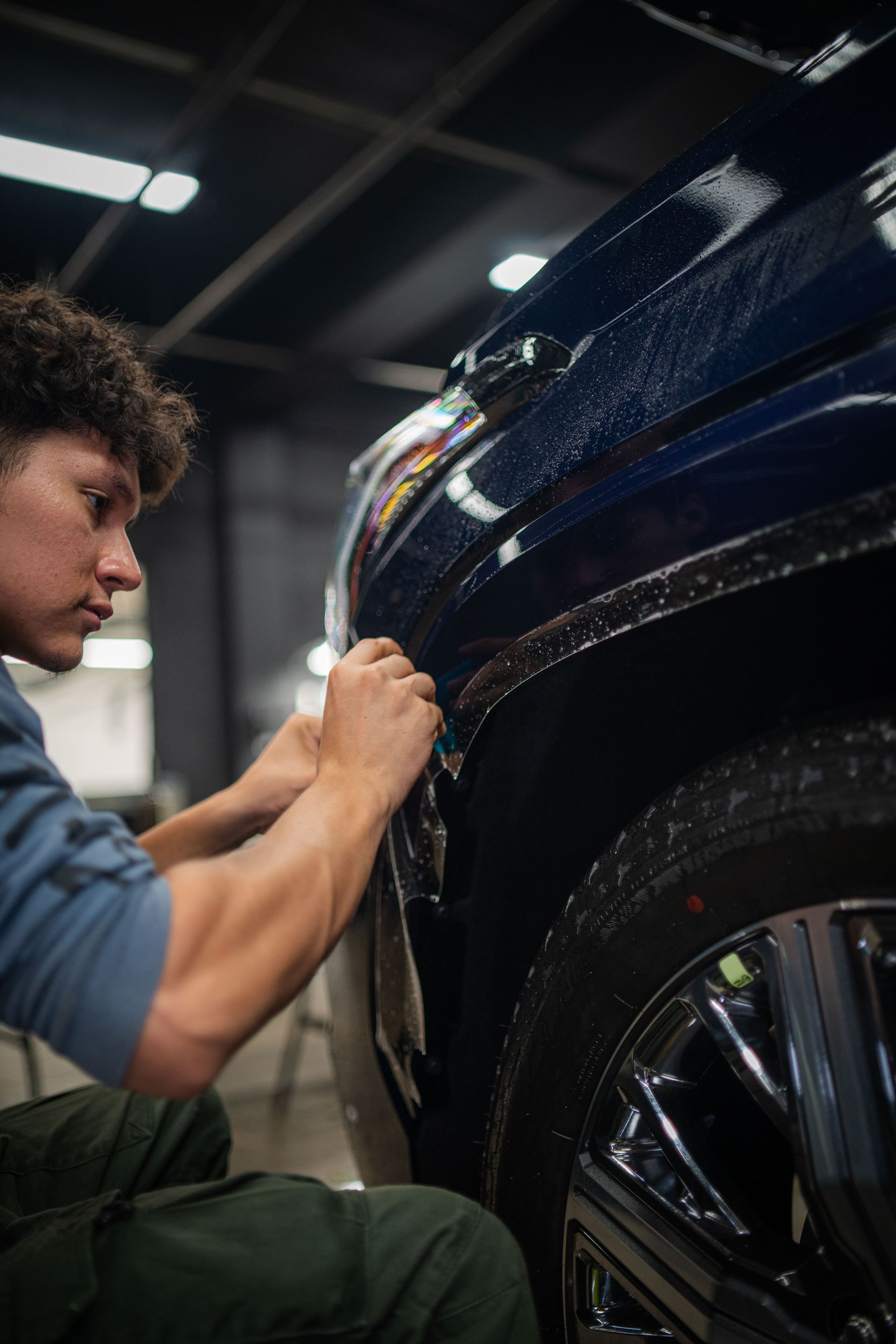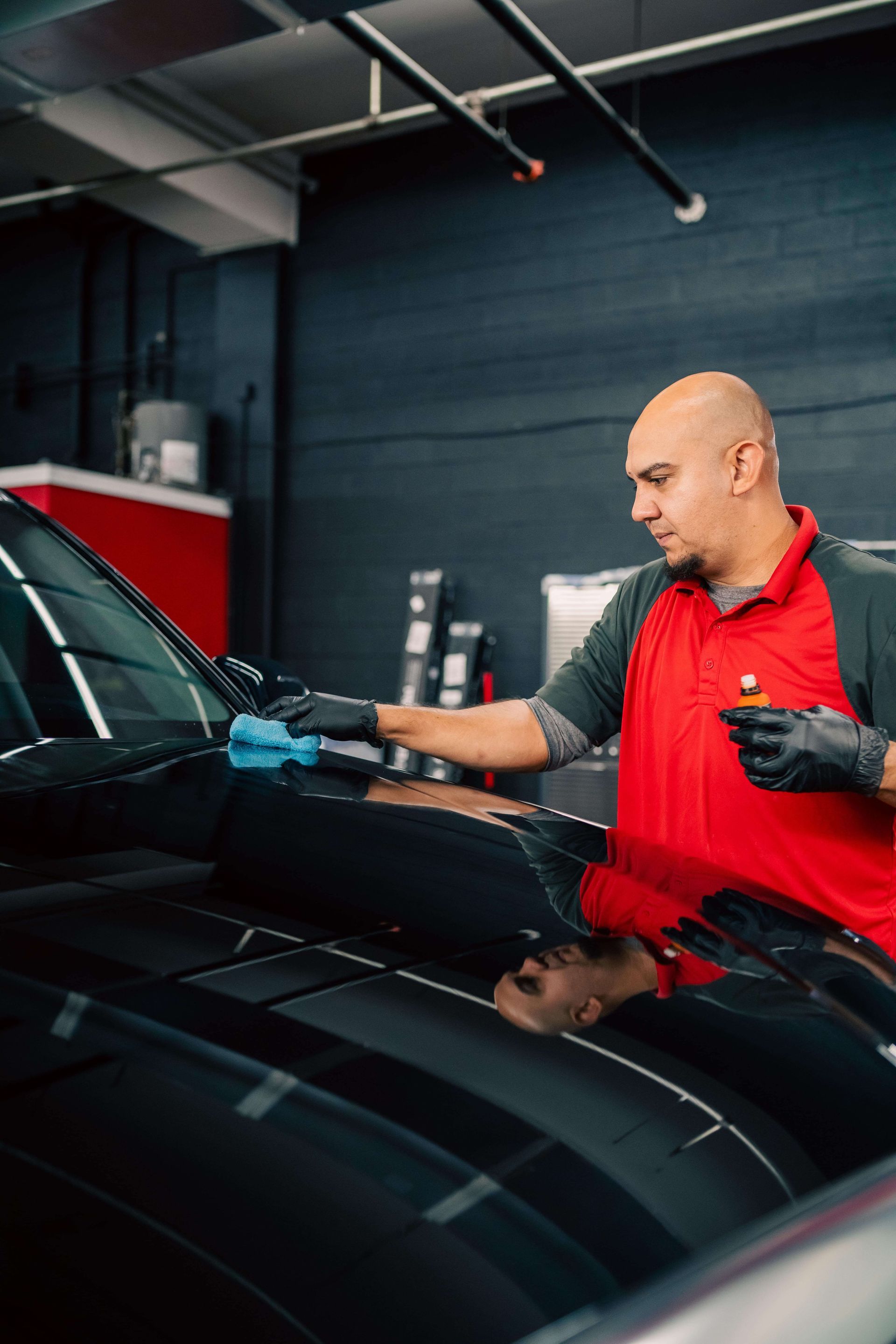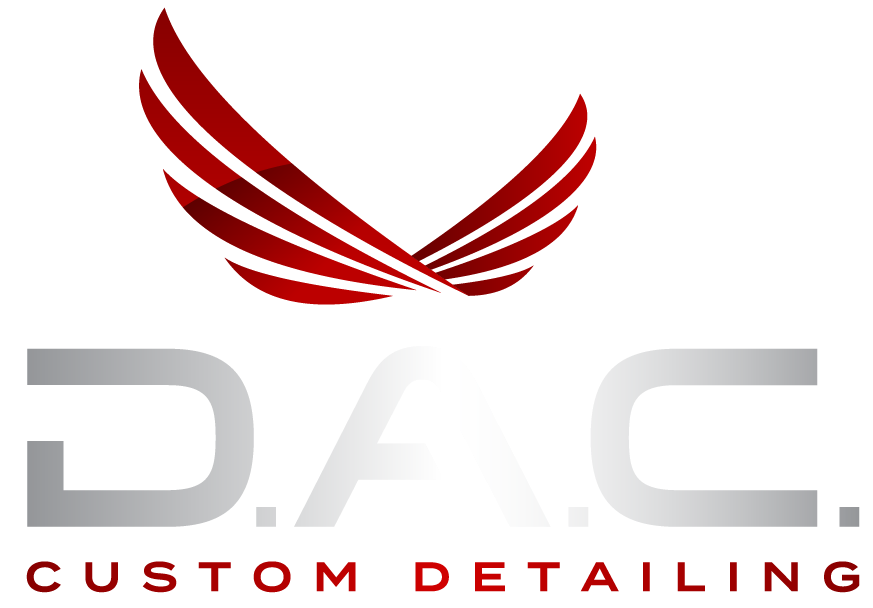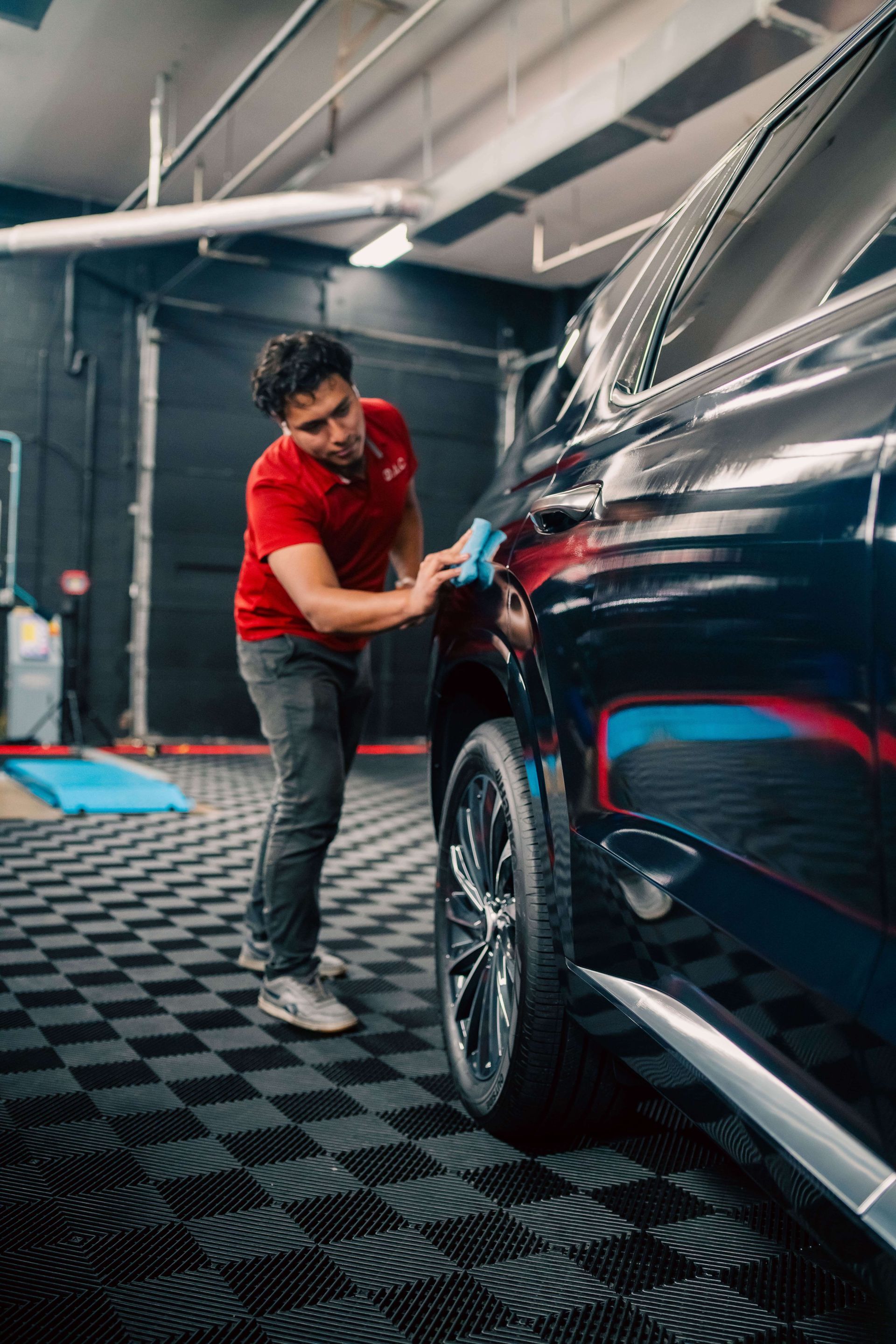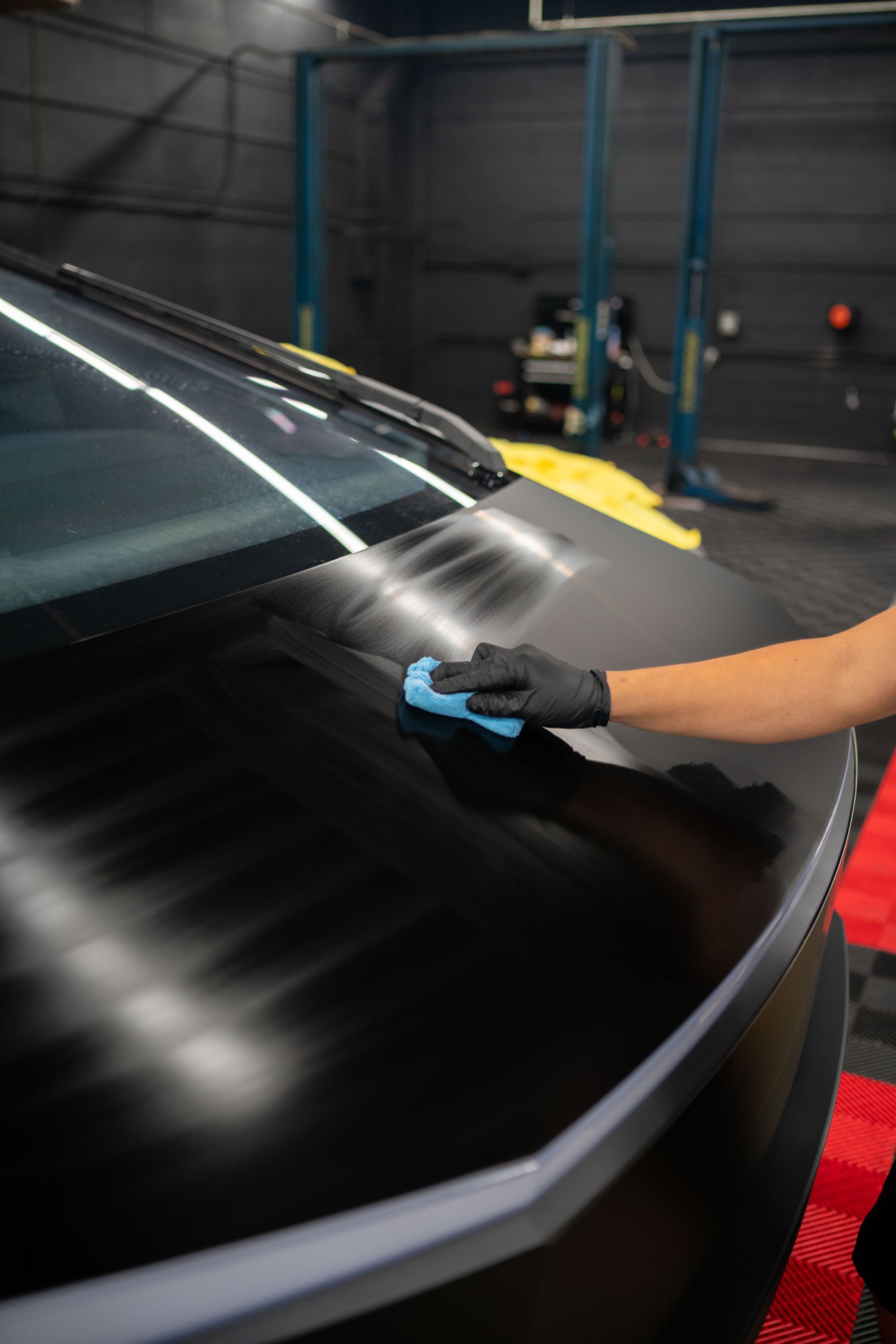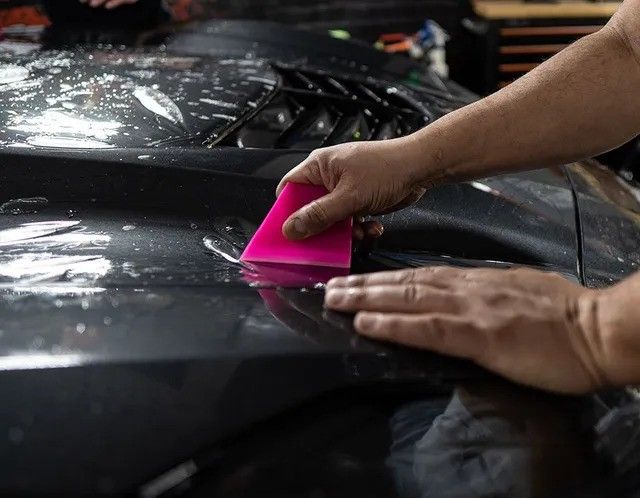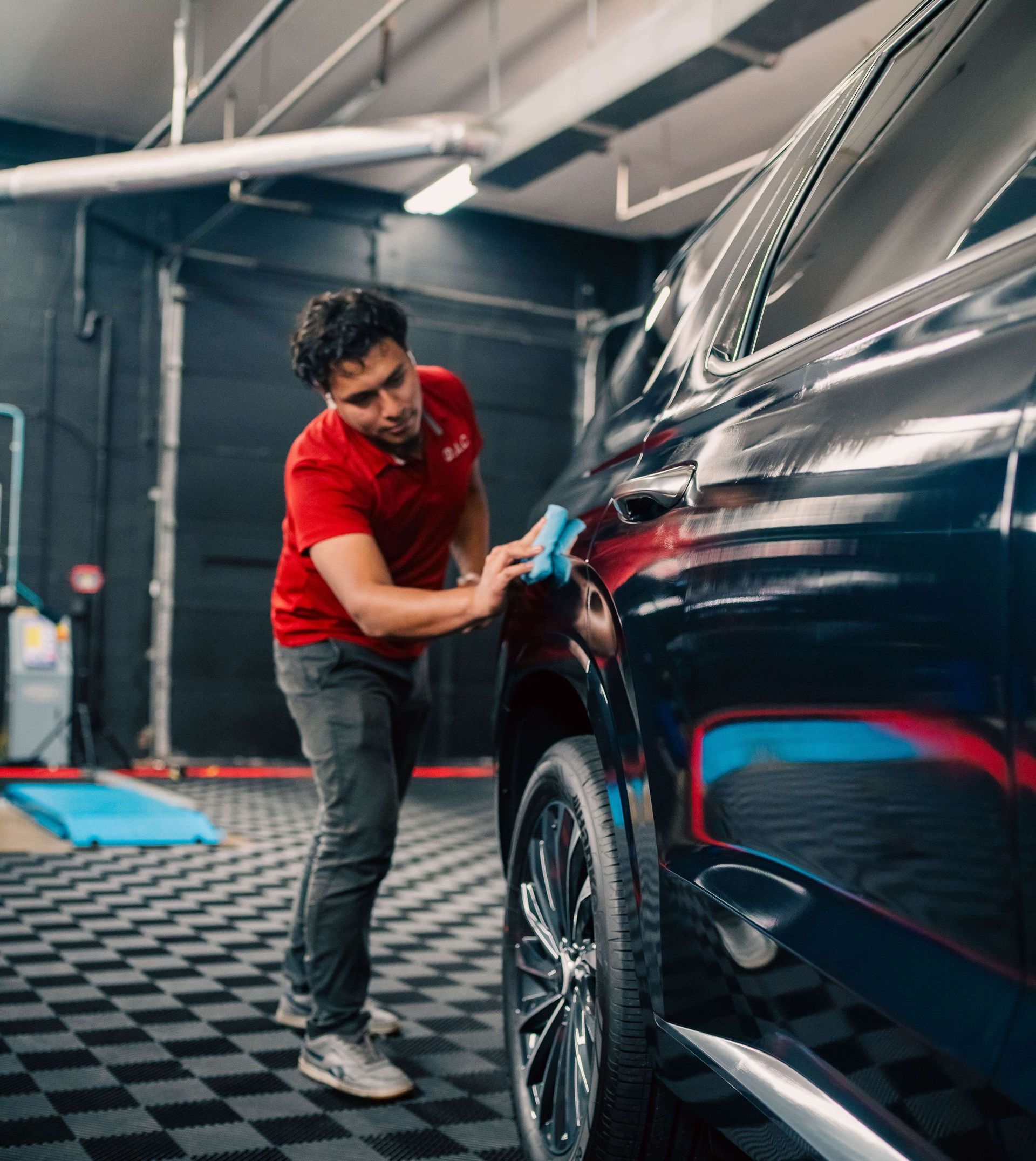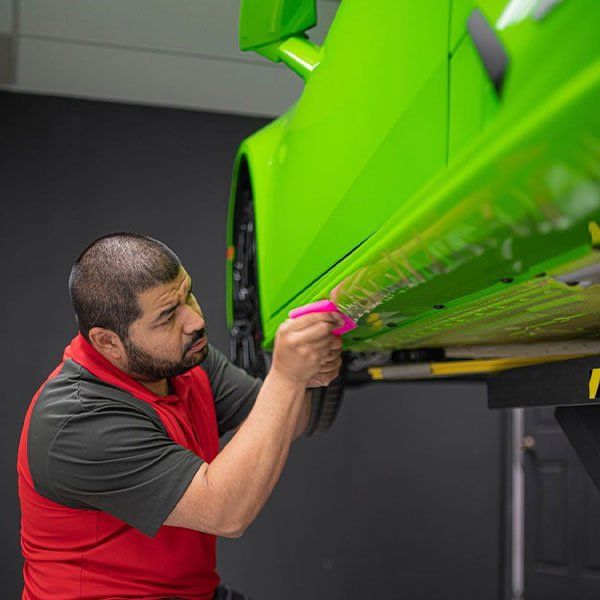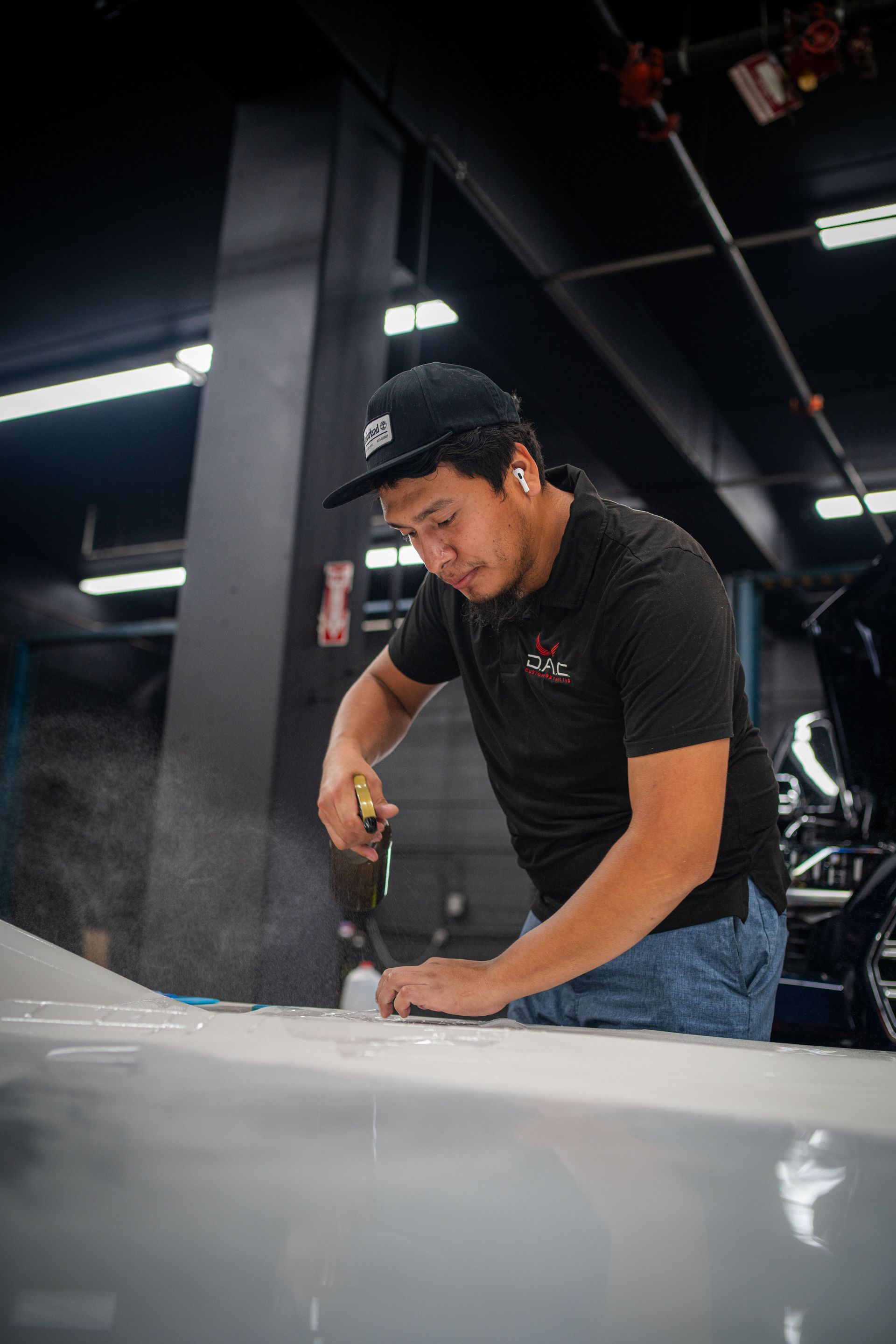REVIVE, PROTECT, MAINTAIN
When it comes to protecting your car, making the right choice between ceramic coating and wax can feel overwhelming. While both options promise to shield your vehicle's paint job, they come with different benefits, durability levels, and maintenance requirements. If you've ever found yourself endlessly applying wax only to watch it fade in a few months, you might be curious about whether there's a better long-term solution out there. In this article, we'll break down the key differences between ceramic coatings and traditional waxes so you can make an informed decision that suits your needs and keeps your car looking great for years to come!
Ceramic coating offers better car protection compared to traditional wax due to its superior durability, lasting 2-4 years with proper application, while wax typically requires reapplication every few months. Additionally, ceramic coatings provide enhanced resistance to chemicals and UV rays, making them more effective for long-term vehicle care.
Comprehensive Protection Comparison
- Resistance to Environmental Hazards: One of the most significant benefits of ceramic coatings is their remarkable resilience against a range of environmental threats. Imagine driving during a rainstorm; you can rest assured knowing that a ceramic coating is protecting your car from ultraviolet (UV) rays, acid rain, and everyday hazards like bird droppings and tree sap. This level of protection is made possible by a chemically bonded layer that firmly adheres to the car’s surface, creating a shield notably stronger than traditional wax.. While carnauba wax offers a natural barrier and is beloved for its warm glow, it leaves surfaces vulnerable over time, as it cannot withstand these environmental pressures as effectively. As we shift our focus, let's discuss another vital characteristic of these products: water repellency.
- Water Repellency: Both ceramic coatings and wax boast hydrophobic properties, meaning they can repel water. However, ceramic coatings far outshine traditional waxes in this regard. Picture this: after a rainfall, instead of seeing water pools stubbornly adhering to your car's surface—leading to unwanted water spots and streaks—a well-coated vehicle allows raindrops to bead up and roll off effortlessly. This innate hydrophobicity not only maintains the visual appeal of your paint but also saves time when cleaning your car since less dirt sticks to the surface. Diving deeper into protective features, let’s explore how each option handles exposure to harsh chemicals.
- Chemical Resistance: When it comes to enduring harsh conditions, ceramic coatings take the lead due to their exceptional chemical resistance. They can withstand exposure to strong cleaning agents and chemicals without degrading quickly. Imagine using an industrial cleaner on your vehicle; with a ceramic coating, your paint remains protected from potential damage. Conversely, waxes may begin to break down due to such harsh exposures, which diminishes their effectiveness over time. This aspect alone makes ceramic coatings a favorable choice for those who regularly clean their vehicles or live in areas where harsh environmental conditions are prevalent.
Understanding these distinctions certainly informs better maintenance decisions for preserving your vehicle's integrity as we further explore how these products impact aesthetics and finish.
Visual Impact and Finish
When it comes to highlighting the beauty of your vehicle, the finish is everything. Owners are often caught in a battle between achieving that stunning gloss and keeping their paint protected. Ceramic coatings and waxes each provides unique attributes that can enhance the visual appeal of your car, but they accomplish this in different ways. Imagine pulling up to an event; the right shine can make heads turn.
Gloss vs. Shine
Let’s explore what gloss and shine really mean for your vehicle. Gloss is all about depth and warmth, creating a rich appearance that makes the color pop, while shine focuses on that mirror-like reflection we all admire. Traditional waxes, especially those made from carnauba, deliver a beautiful gloss, bringing warmth to the paint that evokes the nostalgia of freshly waxed surfaces. This makes your car look as if it just rolled out of the showroom—an effect no enthusiast can overlook.
However, ceramic coatings excel in offering a superior shine that resembles fine glass. They protect against environmental elements and potential scratches while maintaining clarity over time. Picture the difference: a car treated with wax shines brightly for weeks, but in a few months, it may fade or dull, whereas a ceramic-coated vehicle continues to glisten, retaining its sleekness even after years of exposure to the elements.
In essence, while wax offers immediate satisfaction with its rich visuals, ceramic coatings are like an investment into long-lasting beauty. If you find yourself preparing for a car show or presentation event, you might lean towards applying wax for that classic attention-grabbing gloss. It’s hard not to appreciate how beautifully carnauba-based waxes can elevate your vehicle’s presence temporarily. However, for everyday use where functionality matters just as much as looks, ceramic coatings stand out due to their maintenance-free nature paired with an excellent finish.
Ultimately, this decision shapes your car journey—a blend of protection and pride on the road as you consider what truly fulfills your needs for aesthetics and longevity. As we transition to our next discussion, the focus will shift toward how these options stack up in terms of durability over time and their ability to withstand wear and tear.
Durability and Longevity
One of the primary advantages of ceramic coatings over traditional wax lies in their durability. High-quality ceramic coatings can last anywhere from 2 to 4 years, with some professional-grade options boasting longevity up to 7 years. This remarkable lifespan allows car owners to enjoy extended periods without the hassle of frequent reapplications. In contrast, conventional wax applications, particularly those made from carnauba, typically last only a few months—commonly requiring reapplication every 6 to 12 weeks. For many busy individuals, constantly tending to their vehicle isn’t feasible, which makes the choice between these two options even more significant.
This difference translates directly into lower maintenance effort for ceramic coatings compared to expected recurrent costs associated with wax applications. Over the long run, investing in a ceramic coating can actually save money since you won't be making as many trips to the store for new products or spending hours buffing your vehicle every few weeks.
While both ceramic coatings and wax protect your car's exterior and enhance its shine, they do so in noticeably different ways when it comes to wear and tear. Ceramic coatings are engineered at a molecular level; they bond chemically with the vehicle's clear coat, resulting in an incredibly strong shield against environmental contaminants such as UV rays, dirt, and chemical stains. This bond allows for much more uniform wear over time compared to wax.
Wear and Tear
As both types of protective layers degrade, it's important to note that ceramic coatings tend not to peel or flake like wax does. Instead, the overall protection remains consistent, ensuring your vehicle continues to shine brilliantly while being safeguarded from potential damage. With wax, however, as time passes and exposure to elements begins to take its toll, you might find patchy areas where the wax has worn away unevenly. Such variability not only detracts from visual appeal but also compromises the protection offered by certain sections of the paint.
A big plus for those considering a ceramic coating is also its resistance to easier cleaning techniques. Touchless car washes can be highly effective in maintaining the integrity of ceramic-coated vehicles. Unlike their waxed counterparts, which may get stripped away during harsher wash cycles or require special care with brushes, ceramic-coated surfaces can handle quick touchless cleaning while keeping their protective qualities intact.
All these factors contribute significantly to whether a car owner opts for a ceramic coating or traditional wax based on personal preferences and practical considerations surrounding longevity and maintenance needs. If you're someone who desires minimal upkeep while enjoying robust protection for your valuable investment—like your shiny new 2025 BMW X5—ceramic coatings will serve you well over the years ahead. Understanding these differences in durability naturally transitions us into examining how application methods affect ease of use and overall experience with each product.
Application Methods and Ease
When it comes to protecting your vehicle, understanding how to apply these materials is essential. The application process can significantly influence your decision between ceramic coatings and wax. For many car owners, especially those who enjoy working on their vehicles, the method of application is not just about effectiveness but also personal satisfaction.
DIY vs Professional Application
On one hand, DIY (Do It Yourself) methods for both options are attractive, especially if you're the kind of person who likes getting hands-on. Wax is incredibly user-friendly; with just a little bit of instruction and basic supplies, anyone can apply it effectively at home. That said, when it comes to ceramic coatings, while the allure of doing it yourself might seem tempting, it does come with its challenges. Applying ceramic coatings involves meticulous surface preparation that requires a keen eye and certain techniques—factors that can prove tricky for even the most diligent hobbyist.
Furthermore, achieving the best results with ceramic coatings often necessitates professional expertise. The preparation extends beyond mere cleaning; it sometimes includes paint correction to remove scratches and imperfections. If you're not well-versed in how to correct that paint properly, you might end up with varying results—compromising the very benefits you aimed to achieve with the coating. In contrast, with wax application, the process is refreshingly straightforward; simply clean the vehicle's surface, apply the wax using circular motions, let it haze for a few minutes, and buff it off. Even those new to car care can master this technique with minimal guidance.
Convenience
While waxing might provide an immediate sense of accomplishment and ease of access, it's important to consider frequency as well. The process may be simpler but remember: it generally needs to be reapplied every 3–6 months, depending on environmental conditions and how often you wash your car. Many enthusiasts find they need to allocate time regularly for this maintenance routine.
On the flip side, ceramic coatings require significantly more initial effort during application—often several hours or even days—but these coatings offer extended protection intervals that can last anywhere from 2 to 5 years once applied correctly. The trade-off shows itself clearly when thinking about long-term maintenance; fewer applications mean less hassle over time.
The difference in ease of application illustrates broader considerations for car owners: your comfort level with performing tasks on your vehicle and your commitment to maintaining its appearance affect your choice. Choosing between these two methods hinges not only on what fits into your schedule but also on how much effort you're willing to invest in achieving a longer-lasting shield for your beloved car’s finish. With these application insights in mind, examining the upkeep required for each option sheds light on how best to maintain that protective layer over time.
Maintenance Requirements
When it comes to car protection, the ongoing maintenance necessary for each type of treatment can significantly affect your overall satisfaction. Ceramic coatings stand out for their long-lasting durability, requiring less frequent upkeep compared to traditional wax. Thanks to their non-stick surface properties, they repel more dirt and grime, allowing for simpler cleaning routines. Imagine finding a sparking clean car with just a gentle scrub instead of needing an exhaustive waxing session every few weeks—that's the magic of ceramic coatings at work!
Routine Care
For routine care, you'll find that ceramic-coated cars can easily handle contaminants like bird droppings or tree sap without leaving behind stubborn stains or marks. Instead of spending time scrubbing, a quick wash with a pH-neutral shampoo often suffices. The ease of maintaining that pristine look means you can enjoy your car's appearance without constant upkeep.
In contrast, waxed finishes require greater attention to detail. Frequent washing with non-abrasive products is necessary to prevent the wax from degrading quickly under environmental stressors. This means you'll be spending more weekends polishing your finish to keep your vehicle looking its best. However, this leads us into the next vital aspect: reapplication frequency.
Reapplication Frequency
With ceramic coatings, you can expect to go several years—typically between 2 and 5 years—before needing any serious maintenance or reapplication. This allows you to reduce both the time and money spent on maintaining your vehicle’s finish. On the other hand, wax requires much more regular love. Ideally, it's best to reapply wax every 1 to 3 months, depending on local weather conditions and the environment in which your car resides. This recurrence might feel tedious for some drivers, especially if lofty weekends spent detailing aren't enticing.
So, if you're someone who enjoys auto detailing as a therapy session, periodic waxing may appeal more to you. On the flip side, if you’re seeking a more hands-off approach that still delivers impressive results without continual extra effort, ceramic coatings emerge as the clear winner. Understanding your own preferences and lifestyle will play a critical role in deciding which protective method suits you best. Keeping these maintenance aspects in mind sets the stage for understanding how these products measure up when it comes to cost and practicality.
Cost Considerations
The financial aspect of protecting your car's paint extends beyond just the price tag seen at the outset. While upfront costs are often a major factor in decision-making, understanding the long-term implications can provide a clearer picture of the value each option brings. This ensures a holistic view and prevents you from reacting solely to sticker shock.
Upfront Costs
When considering ceramic coatings, it's important to note that their initial investment can be significant. Professional applications typically range from $700 to $2000, depending on the brand and complexity of the job. If you fancy a DIY route, which offers a more budget-friendly option, you can find kits for anywhere between $50 and $150.
In contrast, traditional wax solutions appear much less daunting; high-quality waxes, like premium carnauba options, usually cost between $20 and $50 per application. These differences can certainly play a role in your decision as you weigh what's right for your vehicle.
Long-Term Financial Impact
However, these upfront costs aren't the complete story. Ceramic coatings might demand a heftier sum initially, but they offer prolonged protection that can save you money down the line. Their durability means you're less likely to need frequent applications or repairs due to fading or damage caused by environmental factors—think of it as investing in your peace of mind. On average, ceramic coatings can last anywhere from 1 year to over 7 years, depending on maintenance practices and product quality. A comparison reveals that while the cost to apply wax frequently can feel manageable—especially for those who choose to apply every few months—these routine purchases add up.
For example, if you apply wax four times a year at an average cost of $35 per session, within just two years, you'd spend about $280. In comparison, something like reputable brands, with their history of lasting at least 5 years (often reported by users), could turn out to be a more prudent financial choice despite its higher upfront cost. It’s crucial not only to focus on the monetary side but also to consider how involved you wish to be in car care. If you're someone who dislikes regular upkeep or has a tight schedule, investing in a ceramic coating may correlate with a more satisfactory ownership experience. Ultimately, it boils down to balancing upfront expenses against potential long-term savings while aligning with your preferences for maintenance involvement.
As you navigate this decision-making process, take stock of your habits regarding vehicle care. Do you enjoy the ritual of waxing your car regularly? Or would you rather allocate those hours elsewhere? Understanding what makes sense for you personally often leads to the best choice economically as well as emotionally. Considering both immediate costs and long-term savings is essential in making an informed choice between ceramic coatings and wax. By evaluating your personal preferences and lifestyle, you'll find an option that not only protects your vehicle but also fits seamlessly into your life.
Unbeatable Ceramic Coating Protection in Washington, D.C.
Give your vehicle the protection it deserves with D.A.C Custom Detailing's advanced ceramic coating services in Washington, D.C. Our high-quality ceramic coatings create a durable, hydrophobic layer that guards your car against dirt, water, and environmental contaminants while enhancing its shine. With expert application and long-lasting results, your car will stay looking pristine for longer. Ready to protect your ride? Contact D.A.C Custom Detailing today and let us provide your vehicle with the ultimate defense against the elements.
Share with friends

